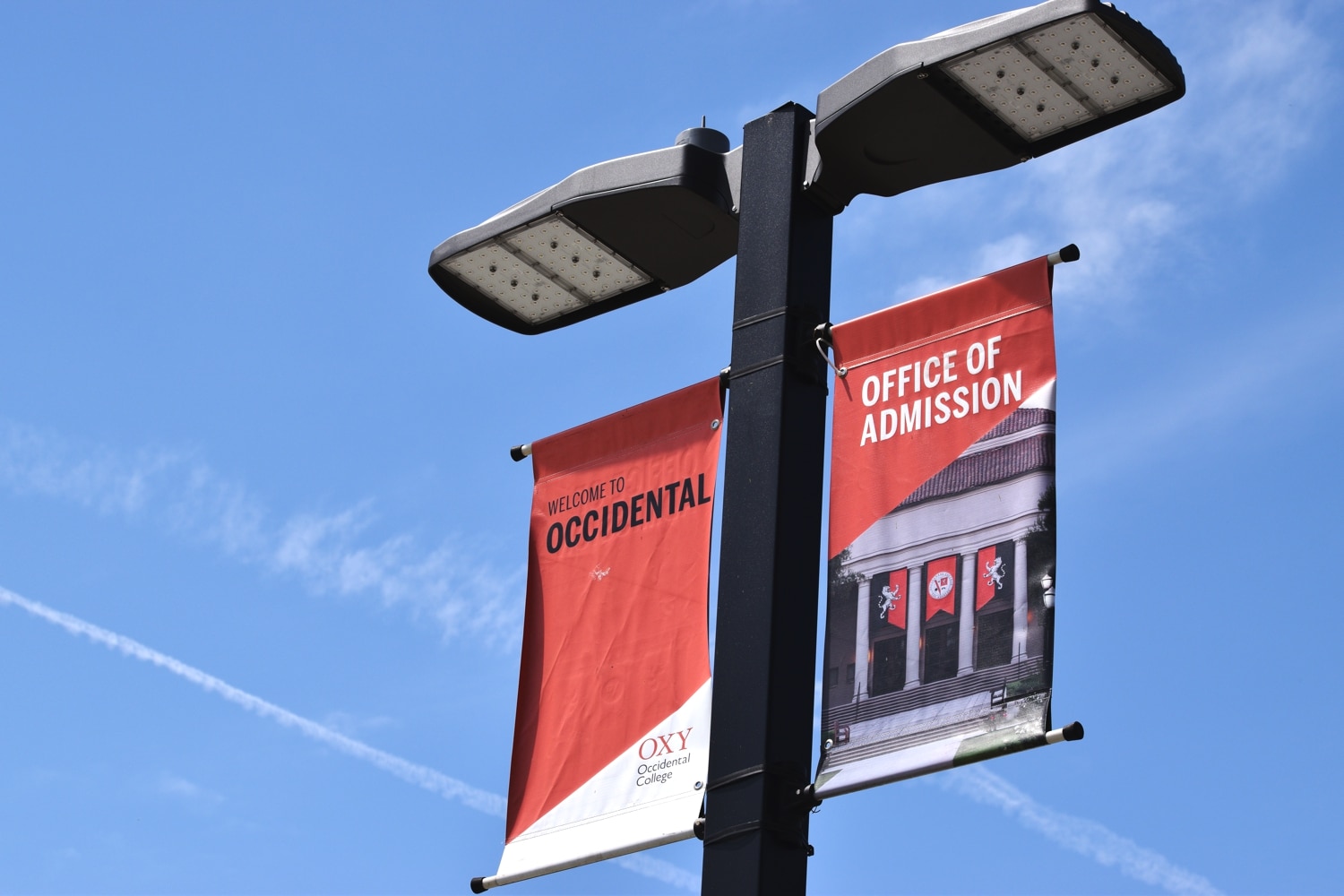
According to a message from President Tom Stritikus in May, first-year enrollment declined by nearly 15% for the incoming class of 2029, which led the college to make adjustments to its annual spending and admissions plans.
Vice President and Chief Operating Officer Amos Himmelstein works to oversee the business office, budgeting and finance year to year. Himmelstein said the college instructed faculty to spend less on discretionary items such as food, travel and professional development.
“We’re going to try and go through a more informed process to think about next year’s budget,” Himmelstein said. “But enrollments will play a big role in that too.”
In addition, open vacancies in some administrative positions are being left unfilled rather than hiring someone new, according to Himmelstein.
“If a position is empty, instead of hiring and filling it, we just don’t, versus taking someone who has a job and telling them they no longer have a job,” Himmelstein said.
Beginning this fall semester, student fundraising program Telefund paused operations. Melissa Mount, the new vice president of Institutional Advancement since the beginning of October, said this change is not Occidental-specific.
“This trend mirrors what many higher education institutions have experienced, as traditional phone-based programs have shifted toward digital engagement like peer-to-peer fundraising, crowdfunding and text-to-give initiatives,” Mount said via email. “Our team continues to evaluate what approaches best fit Oxy’s alumni and family community, and we hope to pilot some new student opportunities as early as Spring [2026].”
Senior Director of Communications Rachael Warecki said Telefund’s closure will not have a significant impact on the college’s revenue. She said the college is moving towards alternative methods of philanthropy.
“Telefund has not historically represented a significant percentage of the College’s overall fundraising efforts, and we do not anticipate any funding deficits based on pausing that operation,” Warecki said via email. “Enrollment-based revenue remains the largest contributor to operational revenues, with the next largest contributor being the endowment.”
According to Mount, Institutional Advancement has continued its efforts in fundraising by narrowing in on alumni and families.
“Our communications are focused on sharing impact and inviting engagement,” Mount said via email. “We reach alumni and parents through a mix of digital newsletters, event invitations, direct appeals and volunteer engagement through the Parent and Family Council and Alumni Board of Governors and affinity groups that highlight the tangible outcomes of giving, like scholarships and student success initiatives.”
Mount said the department is utilizing networks of student workers and administrations from surrounding schools to reimagine student fundraising.
“Institutional Advancement still has student workers assisting the college’s fundraising team,” Mount said via email. “The college is benchmarking with other schools, assessing data and evaluating different models to determine what our future student philanthropy program should look like.”
As rising tuition continues to be a prevalent anxiety for college families, Himmelstein said this is not a new or Occidental-specific trend.
“Tuition goes up every year. The only year it didn’t was COVID,” Himmelstein said. “It’s a balance of ‘You need more revenue to pay for things so that people can get raises’ [and other costs] […] but we’re not going to try and make it up through a tuition increase. I think the way we make it up is getting more students.”
With changes to enrollment and revenue, Himmelstein said that Institutional Advancement’s fundraising goals stay the same, going towards current-year spending called The Oxy Fund.
“The objective is to reach the goal,” Himmelstein said. “We set a goal that we’re expecting to receive for the Oxy fund that has not changed [since Telefund closed].”
According to Mount, Institutional Advancement has yearly spending priorities planned with the College’s donors, foundations and corporations.
“For 2025–2026, our priorities include expanding paid internships for Oxy students; increasing scholarship support, including merit-based awards, early Decision and transfer scholarships and the Occidental Affordability Promise; continuing capital projects like the Norris Chemistry Hall renovation [and] advancing student well-being and belonging initiatives,” Mount said via email.
During October, the college introduced the new Occidental Commitment Scholarship, entailing a guaranteed minimum of $15,000 annual scholarship for students who apply early decision and are accepted to Occidental. Himmelstein, who had a decision-making role in instituting the scholarship, said it is an attempt to attract more students to the college.
“It’s going to cost us money, but the purpose of it is to bring more students in early decision,” Himmelstein said. “We’ll review it, and if we think it’s not working, anybody we offer it to this year — they’ll have it for four years […] If it feels like it didn’t have an impact, we can always stop.”
Amidst the changes in enrollment, Himmelstein said he is concerned about the future of Occidental and other similar colleges.
“If it [low enrollment rate] is a larger trend nationally — if students are feeling like they don’t want to go to school or a liberal arts college and would rather go to a large public institution or even a large private institution — then I worry about small liberal arts colleges’ future[s],” Himmelstein said.
Contact Lucinda Toft at ltoft@oxy.edu
![]()

































